Leafcutter ants are one of Earth’s amazing creatures. Next to humans, leafcutter ants are the most socially complex organism on our planet. Leafcutter ants are found in the rainforests of the Neotropics, from the southern USA to South America. Despite their small size, they have a huge impact on their rainforest environment. Leafcutter ants are ecological engineers, shaping the rainforest environment in significant ways, and adding hundreds of thousands of kilograms of leaf litter to the soil every year. This makes them one of the most important keystone species. Here are 8 amazing leafcutter ant facts!
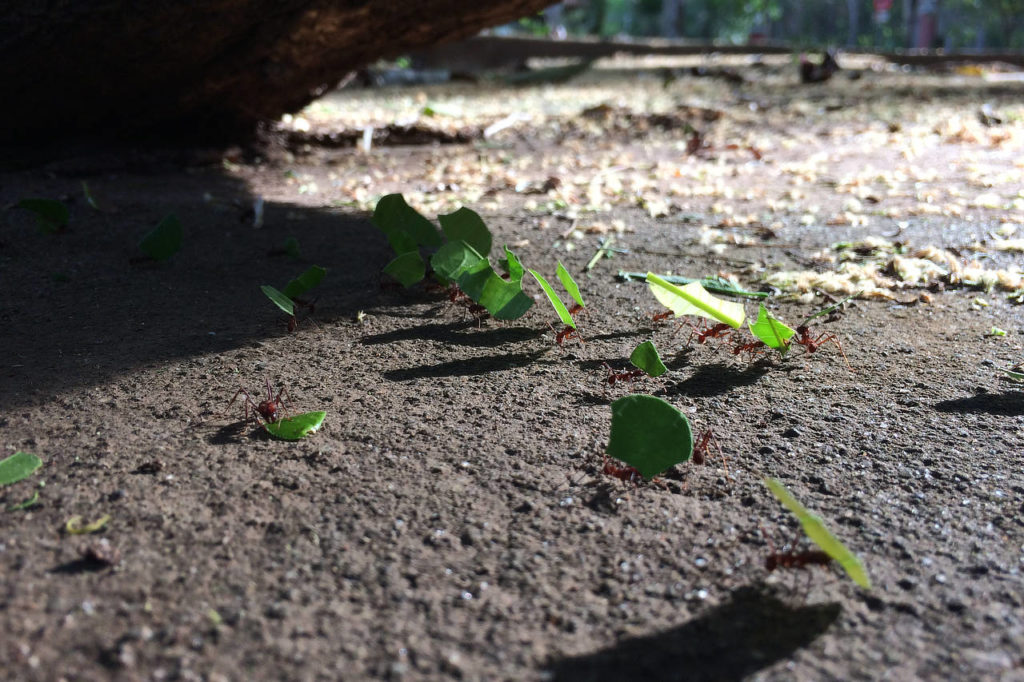
1. Leafcutter ants are hard-working farmers
You may be wondering why leafcutter ants collect leaves incessantly day and night? They actually don’t eat the leaves. Instead, the leaves are crucial to cultivating their fungus garden. Leafcutter ants cut leaves with their strong jaws and bring them back to their underground nests where they are then chewed up to form a nutritional substrate on which a fungus grows. Leafcutter ants are fungus-farming ants, and they have a mutualistic relationship with the fungus. In order to keep their fungus gardens healthy and producing the fungus they need to feed the colony; workers forage constantly to bring fresh leaves back to their nest.
Leafcutter ants are selective in which species of plants they collect leaves from. A study conducted in Costa Rica showed that they have a preference for woody species (rather than herbaceous plants) and introduced species rather than native plants. Plant preferences can change from season to season, and some plants are avoided altogether. Plants contain different compounds, some even fungicidal, that would be toxic to the fungus the leafcutters cultivate, thus not a good choice to bring back to the nest. Interestingly, watching leafcutter ants select some plants over others has led to the discovery of antifungal chemicals and medicinal plants.
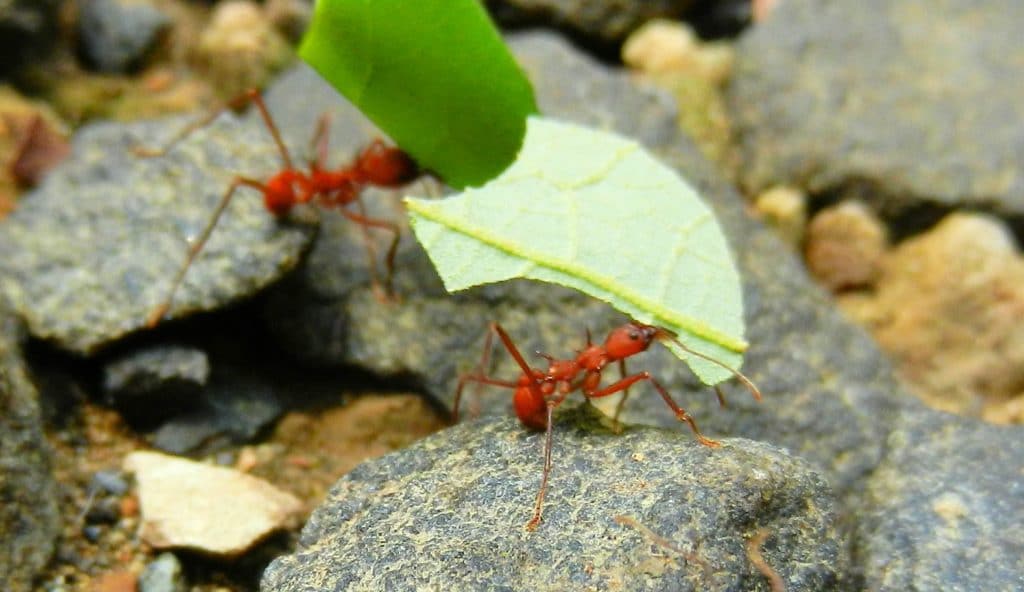
2. A leafcutter ant can carry 10-50 times its own weight
Leafcutter ants are incredibly strong. Their body distribution and joint strength allow them to carry a weight much greater than they are. On top of that, they have formidable jaws, and they carry leaves, twigs, and flowers over their head. If a human could lift 50 times our body weight, we would be able to lift a hippopotamus over our head—with only our jaws! Imagine lifting 2 cars over your head—wow!
3. Some leafcutter ants have armor in the exoskeleton
We know that leafcutter ants are strong – they have super strong jaws and are the weightlifting champions of the insect world. But in a recent publication, a new discovery gives us even more insight into leafcutter ants. One species of leafcutter ant, Acromyrmex echinatior, was recently found to have a special biomineral, similar to dolomite, embedded in its already tough exoskeleton. Made from calcite with high levels of magnesium, it forms a very strong armor all over its body. Until now, this biomineral has never been found in any other insect; it is known from only one other living creature – found in the powerful teeth of sea urchins.
Experiments show that ants with this biomineral acting as armor loses fewer limbs during battles with other ants than other ants without it. Also, it does a good job of fending off fungal infections. While it has only been identified in one species of leafcutter ant so far, there is a good chance that other species have this biomineral in their exoskeleton as well.
4. An adult human would be able to stand inside a leafcutter ant nest
Leafcutter ant nests comprise thousands of chambers of different sizes, which are connected by tunnels. They nest underground, so keep this in mind when you walk through the rainforest. You might unknowingly have a huge super city under your feet! The central chamber of a leafcutter ant nest is the largest fungus garden chamber, and in a large colony, it is big enough for an adult human to stand inside!
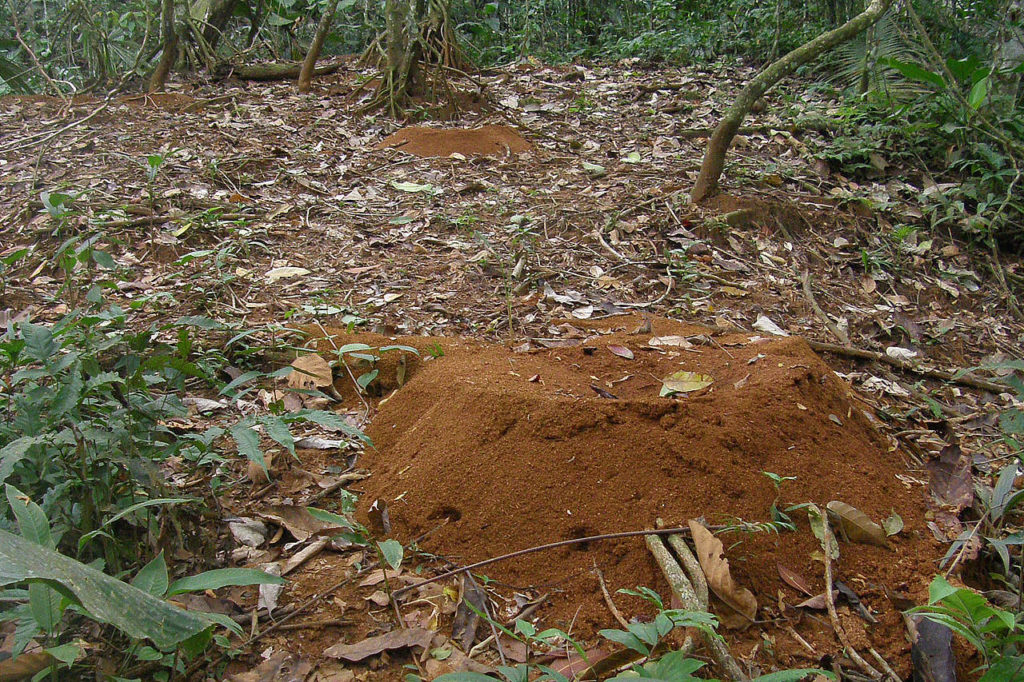
5. Leafcutter ants travel up to 30 meters to collect leaves
These ants work tirelessly day and night, traveling big distances from the nest to forage for leaves. They not only stay on or close the ground, but they will also even climb tree trunks into the rainforest canopy (trees up to 30 meters tall!) to reach valuable leaves. They often create and follow cleared “highways,” some up to several inches wide, to efficiently reach their foraging areas. While they may appear to defoliate an entire plant, cutting the leaves actually helps to stimulate leaf growth, just like pruning your garden plants! This way, the leafcutter ants ensure they will always have leaves to forage in all directions around their nest. So, they are not harming the plants, they are actually helping them grow! Just another one of the amazing leafcutter ant facts out there!
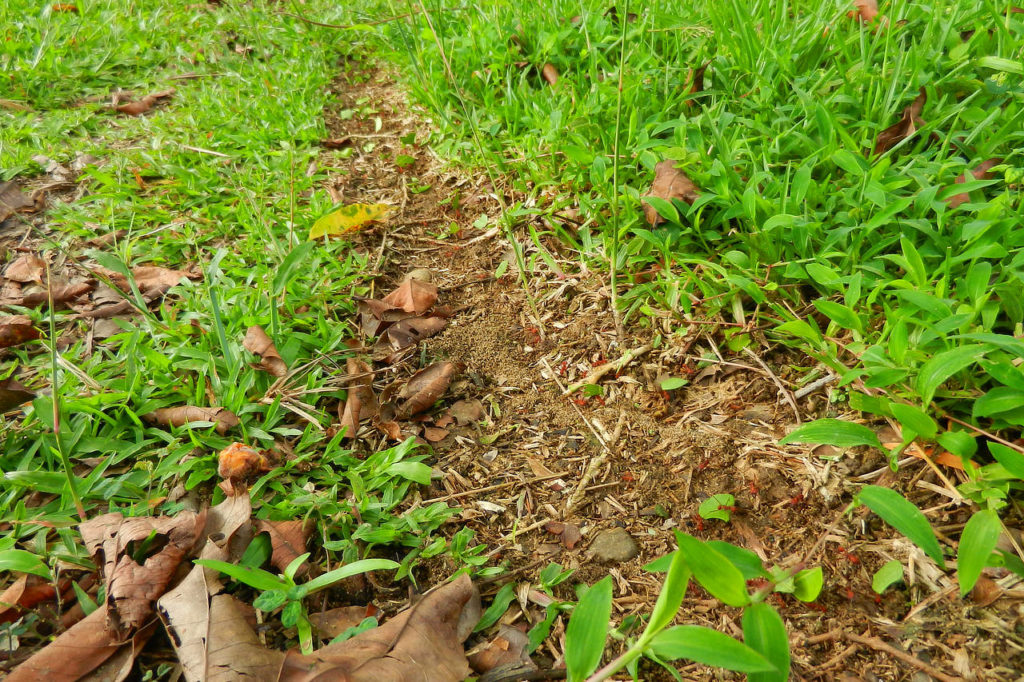
6. (Most) leafcutter ants are females
A leafcutter ant colony can contain up to 10 million individuals, consisting of a single queen, larvae, workers, and soldiers. Next to humans, leafcutter ants are the most socially complex society on Earth! Leafcutter ants are polymorphic, which means individuals of the same species come in different sizes and forms. The queen ant is the largest ant in the colony, reaching 22 mm in length. She can lay up to 30,000 eggs per day!
During the non-reproductive months, all leafcutter ants (other than the queen) in the colony are infertile females. Worker leafcutter ants come in different sizes, depending on the role they have in the colony. Scientists categorize them into 4 general sizes: minims, minors, media, and majors. Did you know that there are workers that forage to collect leaves, tend the fungus gardens, brood larvae, remove parasites from leaves, take out the trash, and patrol and defend the terrain? Depending on their role, they range in size from a head width of 1 mm to 7 mm, with the largest soldiers reaching 16 mm in length! Furthermore, the workers take initiative and decide the division of labor within the colony, rather than the queen delegating tasks.
But, what about the males? When it comes time to reproduce, reproductive individuals called alates—winged females and males—leave the colony and engage in nuptial flights. Each female takes a small amount of the fungus with her when she flies from the colony, and mates with multiple males to collect a large amount of sperm. After mating, the male dies. The female will settle to the ground, lose her wings, and search for a suitable place to start her colony as a new queen. It’s not easy though, and only 2.5% of new queens survive to start a new colony.
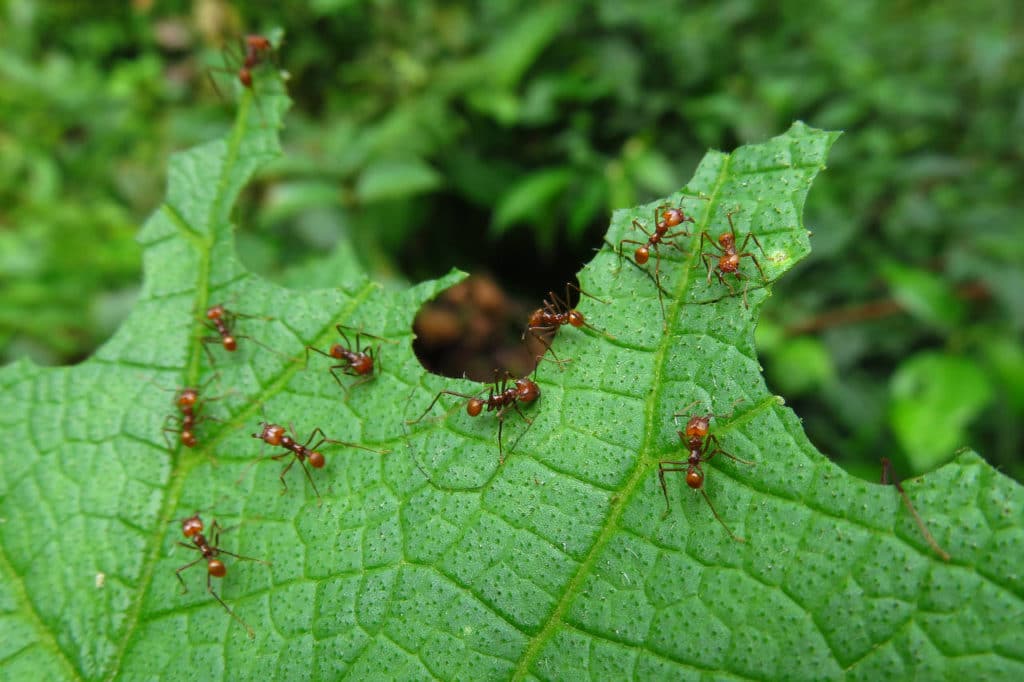
7. There are over 40 species of leafcutter ants
There are currently 47 recognized species of leaf-cutting ants. They are classified into the genera Atta and Acromyrmex and they are endemic to the Neotropics. All leafcutter ants are fungus-farming ants. Although not all fungus-farming ants are leafcutter ants—there are approximately 250 species of fungus-farming ants found on Earth.
8. Leafcutter ants protect their fungus with antibiotic-producing bacteria
Finally one of the most fascinating leafcutter ant facts is that they protect their fungus from potentially dangerous microbes. To keep the fungus gardens healthy, a key player in the leafcutter ant colony is important bacteria. The bacteria is carried on the ants’ bodies and it keeps microbes from damaging the fungus. Scientists are studying leafcutter ant communities, especially in relation to the bacteria, as it can be applied to making pharmaceutical drugs for humans, especially antibiotics. So we can think of leafcutter ants not only as farmers but also as pharmacists!
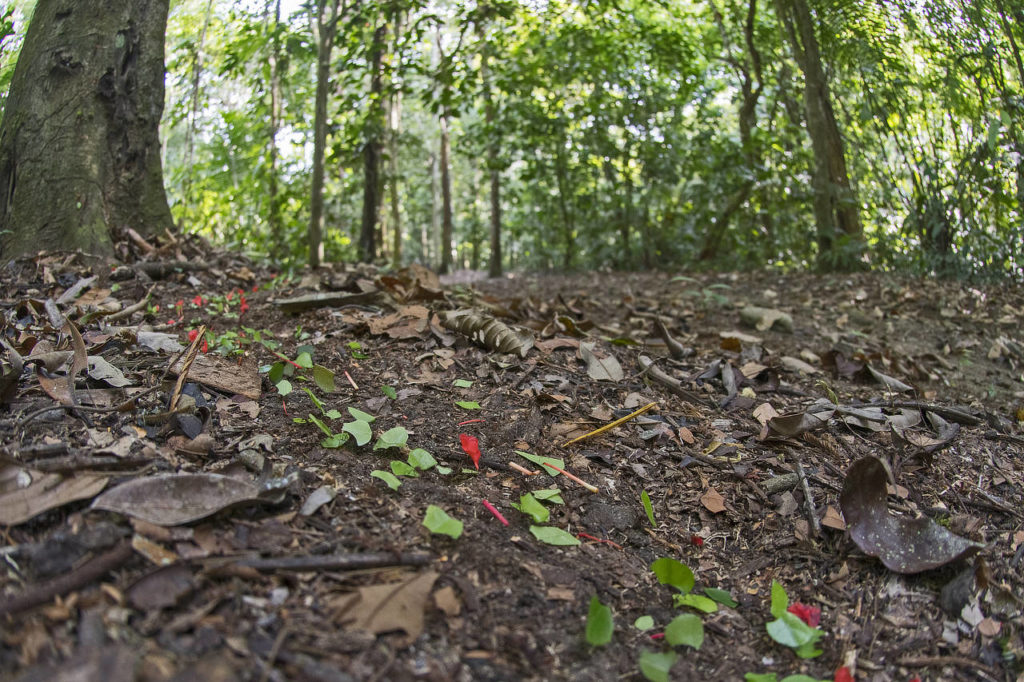
We hope you enjoyed these amazing leafcutter ant facts! So, when you visit the Neotropical rainforests of Central and South America, keep an eye out for these amazing leafcutter ants! Keep in mind that they are responsible for the health of the rainforest ecosystem and if there were no leafcutter ants, the rainforest would be a very different place. We see leafcutter ants on all of our Neotropical tours, join us to see them yourself!


